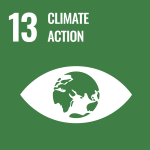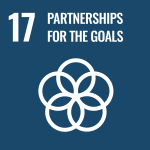Inspired by nature: replicating photosynthesis to produce chemicals
Sunlight, carbon dioxide (CO2), and water are all that plants need for photosynthesis, the most important process for building biomass. Biomass is a renewable resource and can be converted into chemicals, polymers and fuel for energy. Using biomass as feedstock, is one way that the chemical industry can reduce CO2 emissions and go climate neutral by 2050.
Another approach could be the use of CO2 as a direct feedstock. The Rheticus research project, launched by Siemens Energy and Evonik, replicates the photosynthetic process in a pilot plant. In a process similar to how plants have been producing glucose from carbon dioxide using solar energy and water for billions of years, the scientists use hydrogen to produce specialty chemicals from CO2 with the help of bacteria.
How does it work exactly? A synthesis gas made from carbon dioxide and hydrogen is fed to special microorganisms floating in a fermenter. They metabolize the gas mixture in the bioreactor to produce specialty chemicals.
Rheticus is a technology platform that enables the production of a wide range of products from CO2. Currently, hexanoic acid is being produced as the target molecule. Depending on the field of application, hexanoic acid can be used to produce various specialty chemicals that serve, for example, as raw materials for paint additives, cosmetics or lubricants.
The research project has been funded by the German Federal Ministry of Education and Research (BMBF) with a total of €6.3 million. The pilot plant was commissioned during the funding time at Marl Chemical Park in September 2020. BMBF funding for the project expired in April 2022. However, the project is being continued by Evonik.
The basic idea of the technology platform is being expanded: the team is currently working in close coordination with various Evonik business lines on the production of further target molecules in the field of specialty chemicals. The next step is expected to be the development of various end products in a demonstration plant.
With artificial photosynthesis, the Rheticus research project has the potential to keep carbon dioxide in a circle, use green hydrogen as a raw material and reduce dependence on fossil fuels.
Associated SDG targets


